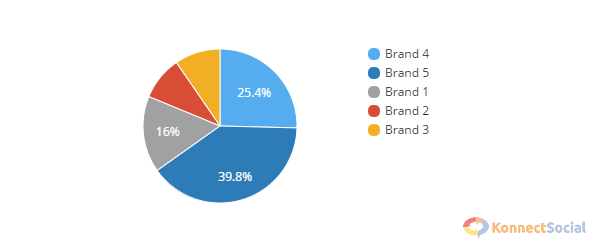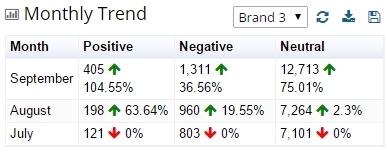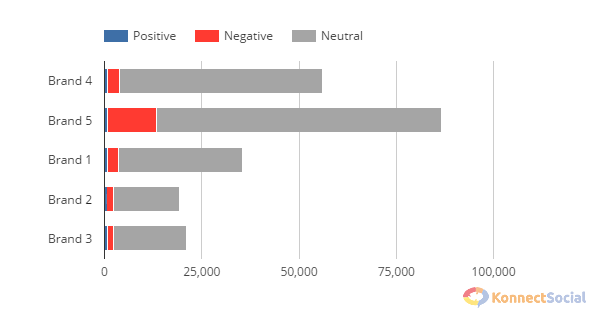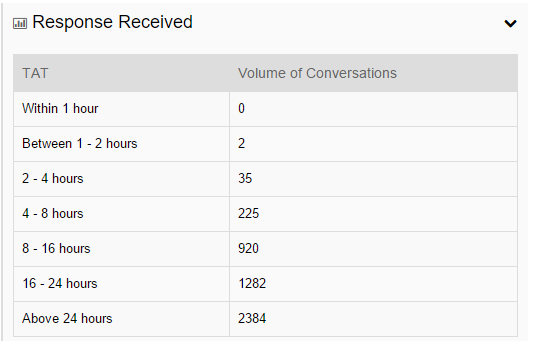There is no such thing as a free lunch. Every part of a business needs to prove their worth by demonstrating the value they add to it. The marketing department is frequently at odds with the rest of the organization as it’s considered a cost center. Brand managers in particular are answerable to senior management. These days money being spent on social media is often scrutinized as measuring Social ROI is not an exact science. However, there are some tangible ways in which success on social media can be demonstrated –
1. Increase in Number of Fans
Widely regarded as an acceptable metric for success on social media, an increase in number of fans is a reflection that a brand’s community of fans and advocates is growing. This is a reliable metric as an increase in the number of fans reflects an increase in the brand’s social penetration. World over ad-spend on traditional mediums is still significantly higher than social media. However, brands should realize that if traditional mediums provides brand awareness, a lot of perception building happens on social media. Which takes us to the next social media success metric –
2. Engagement as a % of fans

It is on social media that users can clearly gauge the opinions of others in their networks about various brands. Classic example of this are fast food brands like McDonald’s and KFC. Lot of stories and memes which question the authenticity of their ingredients are circulating on social media. Often, the sources of such information are questionable and yet their stories become viral in no time. In the absence of active social media efforts, brands run the risk of allowing negative opinions cast a shadow on their brand. Therefore building a community and engaging it in the right way is important for every brand.
‘Engagement as a % of fans’ is an important metric because it is proof of how good and convincing a brand’s social communication is. A dip in this metric should be of huge concern because, it means that your community members have begun to ignore your messages. Thus driving your brand towards being irrelevant in a competitive space. Consider the case where your brand has marginally more community members than the competition, but your engagement is half that of the competition. This clearly means that the other brand has a better social media strategy than you. Engagement is the holy grail of success on social media which deserves all the attention it can get.
3. Share of Voice
Ideally your brand’s share of voice should be on par or better than your closest competitors. This of course is a relative metric that should be further scrutinized. Share of voice is a metric that keeps on fluctuating as brands engage in incentivized social media campaigns. The two most popular social media networks Facebook and Twitter are rife with contest fanatics, who engage with brands for the sole purpose of winning freebies.

Whether it’s your own brand or the competition, you should careful study such spike in conversation volume. You should qualitatively assess how well the sudden spike in share of voice relates to the brand’s core offering. There’s nothing wrong in competitions as long as they are conceptualized for brands to garner more visibility and a wider community. Brands should be able to drive meaningful engagement with their audience. While reporting an increase in share of voice, brand managers should justify why it has happened and how it helps the brand.
4. Sentiment Analysis
Sentiment analysis helps brands measure how well their brand is perceived by social media users. An increase in positive mentions relative to the negative ones is cause for appreciation. This analysis may also be referred to a brand’s social health.


Best in class social listening tools will allow you to track sentiment over a period of time, so that you can track how well your brand’s social strategy is working for you. More importantly, those listening tools which accurately perform sentiment analysis are the ones brand managers should sign-up for.
5. Influencers
Influencers are so named because their social clout has the potency to sway public opinions or at least gets your brand noticed by a large au. From time to time, you should compare your top 5 influencers with that of your competition. Answers to some of these questions are a pretty good indication that your brand is winning –
- Do my influencers belong to the same geographic location as my brand?
- Are my influencer’s followers my brand’s audience too?
- Is the total followers of my top 5 influencers greater than that of my competition’s top 5 influencers?
- Has there been a significant rise in the number of tweets sent by my brand’s influencers? How many more from the previous week or month?
6. Response Time
The efficiency with which social media conversations are responded to has an effect on your brand’s perception. Social media users expect faster responses to their queries / concerns on social media than if they were to approach a brand through traditional mediums. Social CRM equipped tools like Konnect Social have the necessary response management features to keep the response team on its toes. Through Social CRM, brand managers can track the team’s overall Turn-Around-Time and set benchmarks for the team to follow. They can report improvement in response time to higher management as a sign of increased efficiency.

Do let me know if you feel I've missed any crucial social media performance metric.

